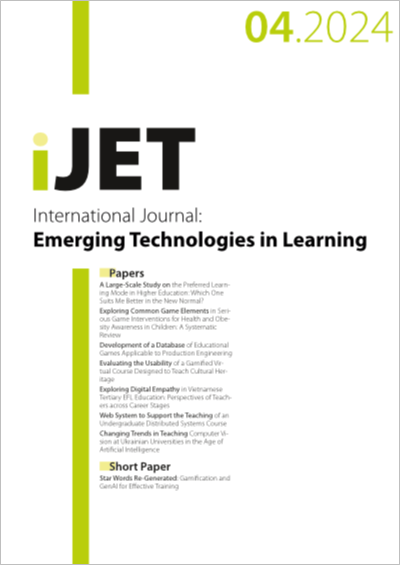Changing Trends in Teaching Computer Vision at Ukrainian Universities in the Age of Artificial Intelligence
DOI:
https://doi.org/10.3991/ijet.v19i04.48391Keywords:
computer vision, online education, deep learning, teaching methodologies, artificial intelligenceAbstract
In recent years, professional education in computer vision and artificial intelligence (AI) has witnessed transformative changes, a process significantly accelerated by the COVID-19 pandemic, which catalyzed the shift towards online learning formats. In Ukraine, as in many other countries, universities have rapidly adapted their curricula to align with these new realities. The onset of martial law in Ukraine further entrenched online learning as the dominant mode of education. Additionally, there has been a noticeable shift in research activities towards projects tailored to the defense sector, unfolding against the backdrop of significant global advancements in AI for computer vision. This article explores the impact of these shifts and the “Artificial Intelligence Development Concept” introduced by the Ministry of Digital Transformation of Ukraine on the quality and methodologies of computer vision education. It scrutinizes specific training courses in this domain, along with the literature used in the educational process. The exploration includes how deep neural network technologies such as TensorFlow, PyTorch, OpenCV, and Python libraries are being integrated into computer vision curricula, reflecting the latest advancements in the field. It also examines the needs of Ukrainian startups and companies specializing in computer vision projects, analyzing how curricula are evolving to meet the specific requirements of modern software developers. Furthermore, the article proposes directions for the further development of online education in computer vision teaching in Ukraine.
Downloads
Published
How to Cite
Issue
Section
License
Copyright (c) 2024 Mykyta Kyt, Valentyn Yesilevskyi

This work is licensed under a Creative Commons Attribution 4.0 International License.



